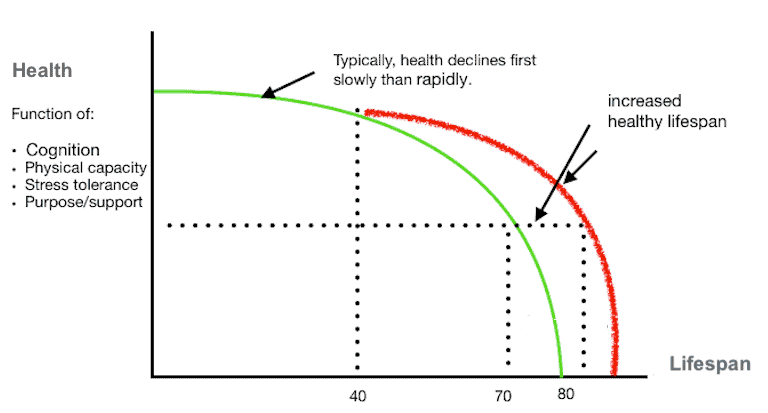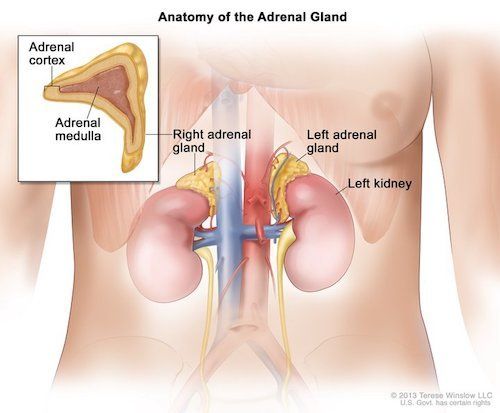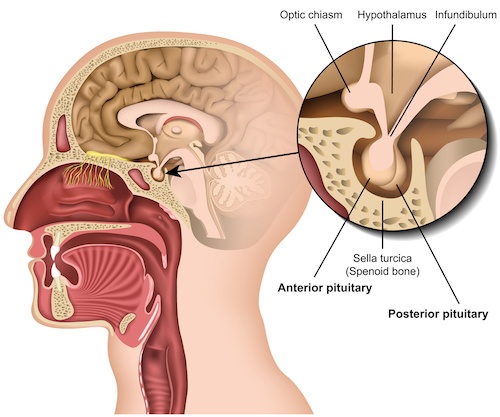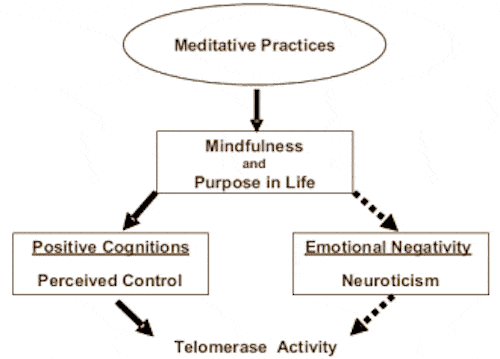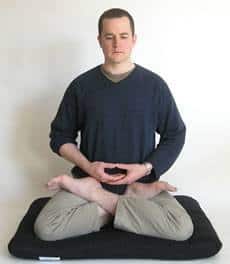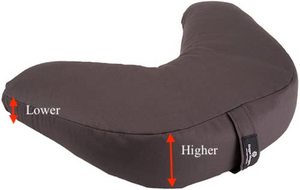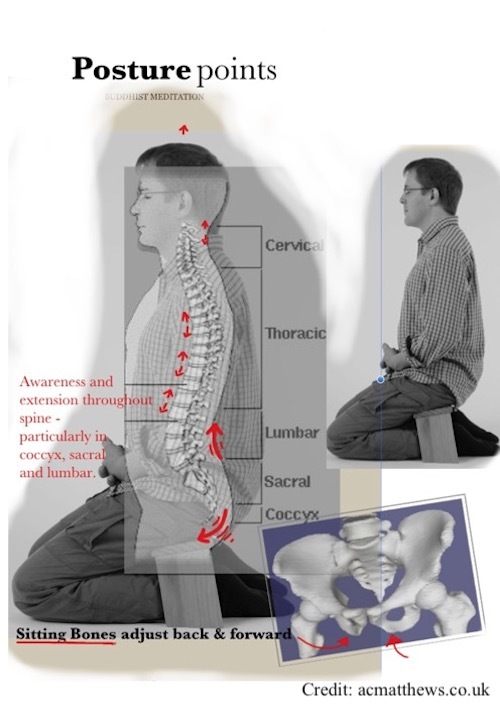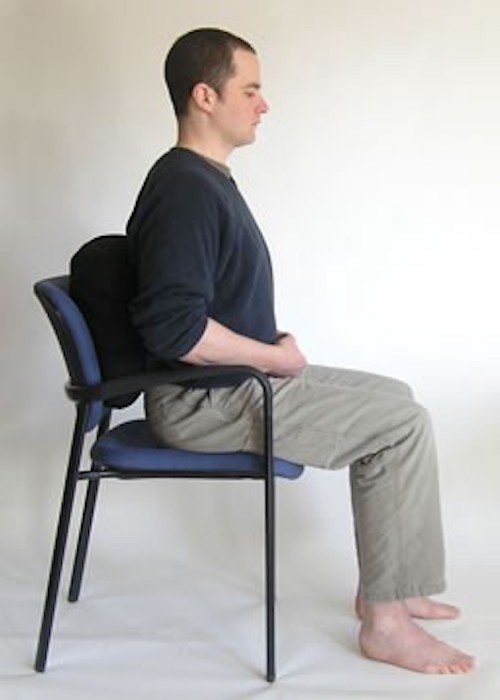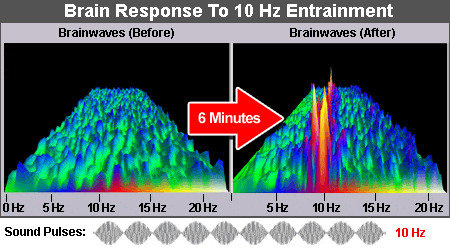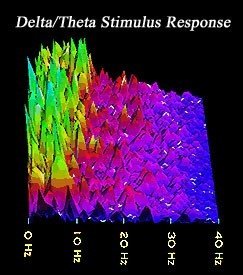How Meditation Slows Aging: The Longevity Mindset, Part 4

That meditation slows aging might not be surprising, but what is startling is the many ways it can do that. If you want to reduce your biological age and increase your healthspan, developing a meditation practice is among the most effective things you can do. Lean why and how.
How meditation slows aging is part of the Longevity Mindset, one of five modules from the "age-proof" online video course I'm sharing as I develop it, sans the video. If you're not already a Subscriber, click here to be notified when the course goes live.
Meditation is the fourth key puzzle to put in place to achieve the Longevity Mindset, because it slows down the aging process in so many ways, as you’ll soon discover.
There are four parts to the puzzle of developing the Longevity Mindset:
- The Age-proof Brain provides the physical capacity (Part 1)
- Active Mindful Intention sets the stage (Part 2)
- Tiny Habits guides your actions (Part 3)
- Meditation slows down aging and helps you create the life you want (here in Part 4)
Part 1 focused on the machine that enables the mind to exist, our Brain. There I introduced the radio metaphor where the brain is the radio, and the mind comprises the radio waves it broadcasts. If the radio gets broken, so do the radio waves. The radio becomes pretty much useless if it can’t, in effect, communicate.
Part 2 focused on Mindful Intention, because you can not make consequential, age-changing modifications to your lifestyle if you’re not mindful of what might block you from doing so. That hurdle is your own mind.
Part 3 focused on building new Tiny Habits that will gradually grow into large, life-changing ones. If you’ve been following this four-part series, you’ve shaped your intentions, which now gives you the juice to learn how to select and establish the habits needed to begin the practice of living long and strong.
Here in Part 4, we conclude with the last of the four parts of developing a Longevity Mindset — Meditation.
Here’s what we’re going to cover:
- What is meditation?
- How meditation slows down aging
- Meditation, telomeres and stress
- How to meditate
- Brain waves and entrainment (listen)
- Your Takeaway
This is a long and detailed post, because I’ve endeavored to provide you with everything you need to know to begin a meditation practice. I suggest you pace yourself, so that you don’t get overwhelmed. Believe me — if you consistently meditate, your life will be greatly enriched, and you’ll get younger to boot!
What Is Meditation?
Scientists study it. Doctors recommend it. Millions of Americans – many of whom don’t even own crystals – practice it every day. Why? Because meditation works. — Time Magazine
We have already covered mindfulness in Part 2, so you might be wondering why that isn’t sufficient enough to plumb the depths of your mind. Well, there is a difference, and that difference is substantial.
Mindfulness is the practice of purposely bringing one’s attention in the present moment without judgment. You practice mindfulness by momentarily pausing and stepping outside the rhythms of your day to become aware of what you’re saying to yourself, what you’re doing to yourself. In effect, you become the Observer.
In contrast, although meditation begins with being mindful, it goes deeper for longer. Think of mindfulness as a splash of cold water that awakens you to the moment, and meditation as a full immersion into a pool where you sustain and expand that state of mindfulness.
If you think that meditation is only for those with bald heads wearing saffron robes, think again. Meditation is for everyone and everyone does it to one extent or another.
Have you ever silently and peacefully gazed out over a large body of water at sunset? That’s meditation. Ever silently and peacefully walked in the woods, on the beach or along a stream thinking of nothing in particular? That’s meditation. Ever been so focused on doing something that you entered a “flow state” where time becomes suspended? That’s meditation.
The Merriam-Webster online dictionary provides these definitions:
- To engage in contemplation or reflection.
- To engage in mental exercise (as concentration on one’s breathing or repetition of a mantra) for the purpose of reaching a heightened level of spiritual awareness.
- To focus one’s thoughts on, reflect on, or ponder over.
- To plan or project in the mind.
Surely you’ve experienced at least one of those descriptions of meditation, and that’s important to recognize. Recognizing how common meditation is to our daily experience demystifies it, which is great, because that makes it more approachable and doable.
So, let’s dig in, starting with how meditation slows down aging.
How Meditation Slows Down Aging
Meditation slows down aging in a mind-boggling number of ways, but what it distills down to is to bend the age curve, so you can live a longer, healthier life.
Simply put, meditation can affect nearly every part of you, and it all starts in the brain.
During meditation, brain-scans see increased activity in regions directly correlated with decreased anxiety and depression, along with increased pain tolerance. Brainwaves are also changed during meditation. Meditators have higher levels of Alpha waves, which have been shown to reduce feelings of negative mood, tension, sadness and anger.
The brain itself can physically change as a result of a meditation practice, both its shape and size. Studies found that after eight weeks of a meditation program, gray matter was more dense in areas associated with learning, memory processing, and emotion regulation. And yet at the same time, the amygdala — which deals with stress, blood pressure and fear — had decreased gray matter.
When we look at the entire body, not only do we see decreased blood pressure as a result of meditation, but it can also increase the variability of your heart rate. Heart rate variability plays a critical role in properly transporting oxygen and carbon dioxide throughout your body.
Immune function is also improved by meditation. In a study where both meditators and non-mediators were given the flu virus, meditators were able to produce a greater number of antibodies and had increased immune function.
If we go a little deeper, we can even see changes on a cellular level. Your chromosomes have protective protein complexes called telomeres, which help reduce damage to your DNA and lower cell death. A shortened telomere length has been linked to several diseases, such as cardiovascular disease, diabetes, Alzheimer’s and cancer.
When cancer survivors completed a meditation program, their bodies showed significant increases in telomere length. It’s believed that psychological intervention, particularly decreasing stress, has a directeffect on the enzyme telomerase, which has been shown to counteract shortening by adding DNA to the shrinking telomeres. I’ll go deeper into that later.
A bigger, less fearful brain, less stress and anxiety, better heart rate variability, better immune function, and less DNA damage all add up to a longer healthspan — those healthy years free of chronic disease. But we’ve just skimmed the surface, as you’ll soon appreciate.
James P. Watson is a medical doctor and longevity expert who is involved in two human longevity studies that are still underway:
- the TRIIM trial that in 2019 showed that epigenetic aging can be reversed in humans, and
- the PEARL trial, which is expected to end in mid-2022, and is testing four different Rapamycin dosing regimens in 200 people.
I mention Dr. Watson not only because of his longevity research chops, but because he’s very well versed in the science of meditation, and has examined the many, many studies that show that meditation directly improves the age-related health issues that most of us eventually experience.
In a comprehensive article he wrote for Aging Sciences, Dr. Watson explored 21 scientifically-backed benefits of how meditation slows aging. I’ll list them, and if any are of particular interest to you, go to the article and scroll down to read the details:
- Meditation reduces stress, ruminative thoughts, appraisals of threat, increases compassion, and may slow the rate of cellular aging
- Meditation reduces heart rate, ambulatory blood pressure and stress-induced hypertension
- Meditation reduces carotid artery intimal thickness (CIMT)
- Meditation lowers lipid peroxide levels in the blood
- Meditation improves Heart Rate Variability (HRV)
- Meditation increases melatonin levels, which helps you sleep. Melatonin also prevents cellular senescence and activates SIRT1 gene expression
- Meditation increases telomerase activity by 43%
- Meditation effectively treats Depression with the same “effect size” as medication
- Meditation reduces mortality
- Meditation down-regulates pro-inflammatory genes – COX2 and RIPK2
- Meditation increases DHEA levels and reverses its age-related decline by 5-10 years
- Meditation increases the size of the brain
- Meditation increases Activity in the Brain’s “Attention Center”
- Meditation Deactivates (decreases activity) in the Brain’s “Daydreaming Center”, also known as the “Default Mode Network”
- Breathing Rate with Meditation Determines the size change of a very specific area under the occipitotemporal lobe. Breathing rate decreases with increasing experience of the meditator
- Meditation can reduce Chronic Pain
- Meditation can reduce anxiety
- Meditation is an “Epigenetic Drug, changing gene expression
- Meditation can reduce stress in caregivers of those taking care of dementia patients and handicapped parents or children
- Meditation changes gene expression in peripheral blood lymphocytes
- Meditation reduces Loneliness in elderly adults
It seems like there’s almost nothing that a meditation practice won’t improve in your life. In terms of age-related issues, these four are prominent:
- Meditation increases telomerase activity by 43% [1].
- Meditation increases DHEA levels and reverses its age-related decline by 5-10 years [2].
- Meditation reduces heart rate, ambulatory blood pressure and stress-induced hypertension [3]
- Meditation downregulates (reduces) pro-inflammatory genes [4, 5, 6]
If telomerase activity, DHEA levels, and downregulated pro-inflammatory genes seem far removed from anything you can relate to, there are plenty more benefits derived from meditation that will resonate as clearly as a Tibetan Singing Bowl.
In the rest of this post, we’ll explore the benefits of meditation more fully, try to get a sense about what’s actually happening when meditating, dig into the science and finally discuss how to actually do it.
Meditation, Telomeres and Stress
Telomeres are the protective physical caps or ends of our chromosomes that contain repeated blocks of the DNA sequence, TTAGGG. Their function is to prevent the loss of this genetic code during cell division. As cells divide, telomeres progressively shorten; thus, measuring their length has been a way of assessing biological aging. Recent studies, however, have indicated that telomere shortening is not necessarily unalterable. Scientists at the National Institutes of Health are reporting evidence that human telomeres can be lengthened with a synthetic sex hormone called danazol, and by various lifestyle factors such as:
You can read about the impact exercise and yoga has on reducing biological age in these posts:
- Why You Must Exercise for Longevity and How To Do It
- Longevity Exercise: 7 Anti-aging Interventions Backed By Science, Part 2
- Resistance Exercise Defeats Age-related Fat Accumulation
- Get Younger and Better with Kirtan Kriya Yoga Meditation
But right now, the focus is on how meditation slows down aging, primarily through the mechanisms that mitigate chronic stress, and telomeres are very much a part of that story.
Telomeres are prematurely shortened by stress and depression, and can be lengthened by meditation. In 2009, Dr. Elizabeth Blackburn won a Nobel Prize for her research showing how an enzyme called telomerase protects telomeres from prematurely shortening. Among those she studied were the chronically stressed, particularly caretakers of people with chronic, debilitating diseases, like Alzheimer’s. These stressed out caretakers exhibited prematurely shortened telomeres.
The same is true for people who are depressed. In a BBC News article entitled, Depression ‘makes us biologically older‘, author Michelle Roberts wrote:
Telomeres cap the end of our chromosomes which house our DNA. Their job is to stop any unwanted loss of this vital genetic code. As cells divide, the telomeres get shorter and shorter. Measuring their length is a way of assessing cellular aging.
People who were or had been depressed had much shorter telomeres than those who had never experienced depression. This difference was apparent even after lifestyle differences, such as heavy drinking and smoking, were taken into account.
Furthermore, the most severely and chronically depressed patients had the shortest telomeres.
The above illustration shows that telomeres are the short DNA sequences on the end of chromosomes. As mentioned, to help maintain their length, telomeres must be nourished by a ribonucleoprotein enzyme called telomerase, which is disrupted by a steroid hormone called cortisol (the so-called “death hormone”) when an excess of it is activated by stress and depression. To understand how pernicious is excessive cortisol and how it affects telomere length, and thus — potentially — lifespan, let’s take a minute to examine what it is and what it does.
Cortisol is secreted by the adrenal cortex, which is located on top of both kidneys:
Your pituitary gland, located in the brain, determines how much cortisol is released in relation to what’s happening to you in the moment:
In a healthy, non-stressed individual, the benefits of cortisol include blood pressure management, reduced inflammation and a stronger immune system. When under a physical or psychological stress evoked by some traumatic event, cortisol converts protein into fuel. Once your brain no longer perceives a situation as threatening, your cortisol level is supposed to return to normal. But under chronic stress conditions, or when depressed, elevated, damaging cortisol levels persist.
Persistently high cortisol levels have these five negative effects on your health:
- Decreases immunity. Cortisol is a corticosteroid and like prednisone, cortisone, and beclomethasone, it inhibits the actions of white blood cells. Initially, this usually leads to increased susceptibility to infections. Eventually, this may actually lead to long stretches of time without colds because the immune system is so weakened.
- Increases abdominal fat deposition. For reasons still unknown, high levels of cortisol induce the body to lay down adipose tissue in the abdomen and upper back/neck. In fact, for those people affected it is next to impossible to lose abdominal fat without addressing stress.
- Breaks down muscle, bone, and connective tissue. Cortisol is a gluconeogenic hormone. Gluconeogenesis is a process that creates sugar from existing tissue. Cortisol promotes the breakdown of muscle, bone, and connective tissue in order to increase blood sugar for the brain.
- Inhibits thyroid hormone activation. The thyroid gland makes 2 major hormones; thyroxine (T4) and triiodothyroine (T3). It predominantly makes T4, which is actually an in-active hormone. T4 is carried in the bloodstream and eventually hits a receptor on or in a cell and becomes activated to T3. High cortisol inhibits this conversion and thus creates a form of hypothyroid.
- Prematurely shortens lifespan. Telomere length is a predictor of lifespan [14]. With each cell division, telomeres naturally shorten, but under sustained stress too much cortisol is produced and hinders the cell’s ability to use the enzyme telomerase to preserve telomere length. People under chronic stress, such as long-term care givers — for instance, those with both elderly parents and children for which to care — can have shorter telomeres and therefore less active immune systems.
The good news is that meditation reduces stress and depression, and can thereby have a salutary effect on telomerase and telomere length. Among many other scientists, UCLA’s Dr. Michael Irwin, UCSF’s Dr. Dean Ornish, and Dr. Elisabeth Blackburn have conducted research indicating that meditation can improve telomerase activity and increase telomere length [15].
A pilot study of dementia caregivers done by Dr. Irwin and published in 2013, found that volunteers who did an ancient chanting meditation called Kirtan Kriya, 12 minutes a day for eight weeks, had significantly higher telomerase activity than a control group who listened to relaxing music.
Also published in 2013, a group of researchers led by Dr. Ornish found that men with low-risk prostate cancer who undertook comprehensive lifestyle changes, including meditation, kept their telomerase activity higher than similar men in a control group, and had slightly longer telomeres after five years. Dr. Ornish’s 2008 study at UCSF found that men with prostate cancer who engaged in 60 minutes of mindfulness meditation each day had decreased the expression of genes associated with cancer.
In one of her studies on meditation, Dr. Blackburn and her colleagues at the University of California at Davis sent participants to meditate at the Shambhala mountain retreat in northern Colorado. Those who completed a three-month course had 30% higher levels of telomerase than a similar group on a waiting list [16]. A statistical calculation revealed that meditation activates telomerase via the reduction in neuroticism and the increase in positive feelings, which may be depicted like this:
In a pilot study that evaluated the effect of meditation on depression and telomere length, Dr. Blackburn and several other researchers found that more than half of the participants who mediated for 12 minutes each day for eight weeks had a 50% improvement in depression levels, accompanied by an increase in telomerase activity, suggesting improvement in stress-induced cellular aging [17]. Although passive relaxation also increased telomere length, the active meditation method was far more effective at increasing telomeres, as the graph below shows.
Changes In Telomerase Activity From Meditation
 You can see the magnitude of the difference in telomere length between the before (gray bar) and after (black bar) meditation group. This happened by just meditating for 12 minutes a day and without any special assist, such as brain entrainment technology, which nonetheless is very useful, as you’ll soon see.
You can see the magnitude of the difference in telomere length between the before (gray bar) and after (black bar) meditation group. This happened by just meditating for 12 minutes a day and without any special assist, such as brain entrainment technology, which nonetheless is very useful, as you’ll soon see.
How To Meditate
By now, I hope I’ve convinced you that meditation is a worthy pursuit should you wish to bend the age curve, so that you extend you healthspan and have a good time along the way.
So, how do you do it?
I think that the most important thing to know about your meditation practice is that there’s no single way to meditate. If you could still your mind, be focused and produce alpha or theta brainwaves while standing on your head, then that’s your meditation. That said, for most of us there are certain techniques that are useful, none of which encourage a head rush.
Three important parts of any meditation practice are:
- Position and alignment;
- Technique; and
- Entrainment amplification
Let’s examine each of them.
Position and Alignment
Some Quick Pointers for Proper Meditation Posture and Alignment:
- Sit upright in a dignified fashion, spine in a neutral position, and head centered such that your ears are in line with your shoulders, and your chin is slightly tucked in.
- Relax your hands in your lap, beside you, or on your knees.
- If in a chair, position legs and feet so they do not require muscular control to maintain the position.
- If crossing your legs, unless you can maintain the posture comfortably for the length of your meditation, put a cushion under your butt so that it’s angled; knees should be lower than your hips to reduce lower back stress
- Eyes can be shut with eyes looking up slightly, or partially open staring at one point on the floor in front of you
- Focus on your breath coming in and out. Once you feel centered, continue focusing on the breath, or turn your focus on whatever meditation technique you wish to practice.
The first thing is to choose a position that both allows you to be comfortable during your meditation, but still encourages proper meditation posture and alignment. It’s unlikely that you can comfortably sit in full lotus as would a Yogi or very adept acolyte, like this fella:
Impressive, but this “full lotus” taxes the hips, knees and ankles. You don’t need to contort yourself into what for most people will be a very uncomfortable position in order to meditate. But if sitting cross-legged is your preferred position for mediation, consider sitting on a cushion that elevates your sitting bones above your knees:
Common alternatives to sitting up with legs crossed in some fashion include meditating while lying down, sitting in a chair, or on a meditation stool (Zen bench, see pic below), which tends to be my preferred method.
A Zen bench enables proper alignment due to the rounded bottom of the legs that support the cradle you sit on, and tilts your glutes and lower spine backward a bit to accentuate the normal curvature of the spine, like this:
Meditate in a chair
You may want to experience meditation simply by sitting in a chair. If that’s the case, the following illustrations and instructions are useful for any upright sitting posture and alignment.
You do not want your alignment to look like the figure above on the left, as described in the red box below. You do want your alignment to look like the figure above on the right, as described in the green box below.
Improper Seated Meditation Posture and Alignment
- Low back – Flat seats round our low backs, leading to pain and weakness.
- Mid back – Long-term poor posture can cause a sore hump in the mid back. The trapezius muscles, the largest muscles in our upper back, connect the spine here. A head too far forward overload the trapezius with work and tension in order to keep the head up, an issue made worse if the shoulders are also rounded.
- Neck – A slumped back makes our heads come forward. Chairs with tilted backs compound this misalignment, despite helping to relax the lower back. When neck vertabrae are tilted forward, the muscles at the base of the skull must contract and work hard to keep the head as level as possible.
- Jaw – When our head is forward, the muscles going from the inside of the jaw to the neck vertebra pull the jawbone back. Then the muscles running between the corners of the jaw and cheekbones have to work to keep our mouths closed.
- Shoulders – Slumping causes our shoulders to roll forwards, tightening the chest, which is aggravated more when we use our arms while seated this way to read, eat, type or drive.
- Chest and Belly – Having a slumped torso compresses all the vital organs located there; a slight but significant compression over the long term. This compression habituates us to primarily abdominal breathing, rather than , as opposed to using the more efficient diaphragm.
Proper Seated Meditation Posture and Alignment
- Low back – Our low backs are designed to curve, which puts the pelvis at the correct angle. When standing tall and straight, our weight is properly distributed from the head down through the heels (not toes), gluteus relaxed, head centered over the shoulders. A tilted chair preserves this angle, enabling a more relaxed posture. Any tension in this position may result from having rolled the pelvis too far forward, making muscles reflexively tense.
- Mid back – Bringing the low back forward takes the mid back with it as well. With practice, the shoulders become relaxed and fall back, enabling the ribcage to tilt up and cause breathing to be easier. Try rolling the shoulders to find the right position for them.
- Neck – Aligning the neck vertebrae so that they are squarely over the shoulders allows the neck muscles to relax. When they do, the chin drops down and in. This may take some fiddling. If the muscles in this area remain tense, your head may need to be pulled back more, may not be level, or tilted.
- Jaw – If the head is properly balanced, the tucked chin tucks moves the jaw forward, relaxing the jaw muscles. The tongue will be pushed forward by the tucked position and rest against the roof of our mouth.
- Shoulders – When the spine is properly aligned, the shoulders can move back, which stretches out and lowers the chest.
- Chest and Belly – Good meditation posture lengthens the spine, lifts the ribcage and opens space in the abdomen. Everything moves more freely, and breathing is efficient and effective.
If you can’t get comfortable enough to sustain your meditation for the desired time period sitting cross-legged, on a Zen chair or regular chair — then it’s time to lie down. (You’ll certainly be relaxed in this position, but don’t go to sleep!) Even when lying down, there is a recommended alignment:
- Lift your head, point your chin to your chest, then lengthen and set your head on the floor
- Rotate your arms out so that your palms face the ceiling and extend your hands to your side about 18 inches (46 cm) from your sides
- Flatten the small of your back against the floor, hold for a few seconds and then let it rise as it will
- Place your feet about 18 inches (46 cm) apart, and let them turn out if they’re so inclined
Your Meditation Technique
As I said at the outset, there’s no one way to meditate, but generally there are two objectives:
- The first objective is to clear your mind of unwanted, disruptive thoughts in order to be able to focus on your breath, an image, a sound, a mantra, something that needs healing, or whatever else you want.
- The second objective is to get your brain to produce beta or theta brainwave frequencies, a sure sign that you’re in a meditative state. I’ll tell you more about that below.
Breathing
Most meditation techniques focus on the breath, at least initially, because focused breathing relaxes the body and tunes the mind. There’s no one way to breathe when meditating, but I favor the diaphragmatic breath work referred to as Yogic or Taoist ujjayi breath. If you do it properly, you’ll quickly see how it fills up your entire cavity, from belly to chest, front and back.
Here’s how to do the Ujjayi Breath:
- Inhale through your nose and let your tongue rise inside your mouth to your upper palate.
- Breathe out through your nose as if you’re trying to fog a mirror (you will make a slight raspy sound that initially emanates from your chest and throat).
- Inhale through your nose making the same raspy sound.
- Making this sound slows down your breathing; help it along by taking four second inhales, hold for four, four out, hold and repeat.
- Once you feel you’ve got the pace and sound figured out, focus on letting each inhale expand your entire cavity, belly to chest, front to back, so that you notice movement in parts of your rib cage of which you’re typically unaware.
- Make sure your diaphragm is filling up and emptying as you breathe.
There’s nothing like a demonstration, so check out this video by SarahBethYoga (the ujjayi starts at 1:03):
Focus
Once your breathing is on autopilot, it’s time to focus on whatever is your intention for your meditation session. It could be a symbol, an image, a prescribed sequence of images, or events. If you’d like to remain focused on your breath, you can direct it to various parts of your body that need healing. For instance, although it’s not literally happening, breathing into your sore foot is an effective way to focus on it during meditation and may accelerate healing.
The main thing is that you keep your focus on whatever was your intention, and not let stray thoughts or the “monkey mind” take you on a journey away from your practice. In Be Here Now: Gerry’s Dharma Lesson, I describe a technique for reducing or eliminating any particular thing that keeps popping up during meditation to distract you.
But there is an exception to the “no distraction” rule. If your meditation is designed to place you in a space of receptivity, then you want bursts of intuition or ideas to appear so you can explore them. Ensure, however, that they truly are what you seek, not some random thought about where you put your keys, or what Sally or John really thinks of you — of course, unless that was your intent to begin with.
Brainwaves and Entrainment
You can quickly achieve the meditative states of practiced meditators by using the technology of brain entrainment. Before you learn about “entrainment”, it’s helpful to know about the brainwaves produced by your brain.
Brainwave entrainment focuses on brainwave patterns of electrical signals made by the brain, which allow neurons (brain cells) to communicate with each other. An Electronencephalograhy (EEG) device can measure these electrical brain signals, or “brainwaves”.
EEG recordings show different types of brainwaves, each working on a different frequency. These frequencies are measurable in Hertz (hz), similarly to how a radio signal can be measured. The brain produces different brainwave frequencies depending upon its current activity.
Typically, the brain tends to operate between the frequencies of 12hz to 38hz, which are Beta frequencies associated with the alertness and physicality of typically daytime activities. As the brainwave frequencies get slower, the mental state and associated processes move further from what’s required to navigate the world at large, and toward the inner realms of heightened creativity and hypnagogic imagery, which you experience when half asleep.
The following chart is a modified version of one at Jeffrey Gignac, Super Mind Science, and is presented here to underscore that different brainwave frequencies correspond to specific metal states and active processes.
| Brainwave Pattern | Brainwave Cycles Per Second | Mental State | Associated Processes |
| GAMMA
|
30Hz to 60Hz or 40Hz to 99Hz, as there’s debate about where GAMMA Starts (30 Hz or 40Hz)
|
Inspiration, higher learning, focus, compassion, empathy and decisiveness under stress, sensory organization processing and integration, and enhanced self-awareness and insight are hallmarks of GAMMA. | GAMMA frequencies are found naturally in higher amounts in long-term practitioners of various forms of meditation. Believed to have strong impact on social consciousness and right and wrong, and to enhance the ability to achieve goals. Improves clarity of thought and believed to improve intuition. |
| BETA | 13Hz to 30Hz or 12Hz to 39Hz | Alertness, concentration, cognition, sensory motor awareness. BETA is a wide-awake state of focus, alertness, analytical thinking and complex mental processing. | Can be used to enhance the absorption and processing of new information. Usually associated with peak mental and physical performance. Higher levels associated with stress, anxiety, disease and the “fight or flight” response, |
| ALPHA | 8Hz to 12Hz | Pre-sleep, pre-waking drowsiness, positive thinking, creative problem solving, stress reduction, enhanced creativity. | Beginning point to accessing the unconscious mind. Bridges the consciousness with the unconscious mind, Better access to resources involved in creativity. Can be a source of motivation and inspiration. Associated with fast learning |
| THETA | 4Hz to 7.5Hz | Hypnagogic imagery, trance state, dream state (REM), | Increased production of catecholamines (important for learning and memory), increased creativity, increased retention of learned material. Believed to increase inner wisdom, enhanced intuition, reduce stress and transformational help for limiting beliefs. May negatively affect attention disorders such ADD and ADHD. |
| DELTA | 0.6 Hz to 3.5 Hz | Deep sleep, no dreams, loss of body awareness. | Physical healing (human growth hormone released) and recuperation. May positively improve symptoms of PTSD. Believed to help with inner growth and wisdom, recovery from trauma, access to the unconscious and “collective conscious” mind. |
| SUB DELTA | 0.1 HZ to 0.5Hz | Unclear | Healing effect on the limbic system, healing. Believed to be the source of deep inner wisdom, peace and divine knowledge. |
Brain entrainment is a profoundly useful technology for meditation. It can quickly facilitate in a novice the brainwaves (typically alpha and theta) that would normally take an experienced meditator many months of practice to achieve.
The images below show, respectively, a person’s brain response when listening to alpha wave entrainment after six minutes, and Delta/Theta entrainment for an unspecified time period [18]:
In the picture above, the red flaring between eight and 12 Hz indicates an Alpha-dominant brain wave experience associated with the starting point of access to the unconscious mind. This state of mind is commonly experienced just before falling to sleep and waking up. Note that it took just six minutes to achieve the Alpha state when using brainwave entrainment technology.
In the next picture, the brain is mainly producing brain waves in the Theta/Delta range [19]. No time frame was provided. With these specific brain wave frequencies comes the “mental state” and “associated processes” described in the table above.
At this point, you may be wondering, How many years of meditation practice will it take for me to achieve Alpha and Theta mind states?
The answer is, nearly right away, courtesy of Bianuaral Beats and Isochronc Tones.
Brainwave Entrainment — Binaural and Isochronic
Binaural Beats and Isochronic Tones are among a number of different brainwave entrainment technologies capable of entraining the brain, such as Harmonic Box X, Monaural Beats and White Noise. They are used alone, or in combination with each other, and with other sounds, like music, or the sound of the ocean.
Binaural Beat Wave Pattern
Binaural Beats are created by generating two different frequencies, one sent to each ear. The tones are mixed together ‘inside’ your head by your brain, resulting in a pulse also called a ‘beat’. For example, if one ear receives a signal of 100hz while the other receives 105hz, the brain cancels out the difference between the frequencies, resulting in a beating tone of 5hz, a low level theta frequency.
The lower of the two tones is called the ‘carrier’ and the higher one, the ‘offset’. The beat you hear is actually created inside your head, not externally. This is because your brain creates the beat after working out the differences from each ear.
In order for Binaural Beats to work, you always have to listen to them through stereo headphones, enabling each ear to receive a different frequency. Without headphones, it would be hard to detect the Binaural Beat audio, because your ears will be able to hear both frequencies at once, thereby nullifying the effect.
Here’s how typical Binaural Beats would look in your brain:
Isochronic Tones
Isochronic Tones are formed in a very different way than binaural beats. Instead of two different tones being combined together, just a single tone is used, and its volume (or amplitude) is modulated into a rhythmic pulse that’s capable of inducing brain entrainment by turning the tone on and off at regular intervals, referred to as “Amplitude Entrainment”.
Isochronic Tones are significantly more obvious and stronger than Binaural Beats, resulting in a more powerful entrainment effect than Binaural Beats. But that doesn’t mean that one is better than the other for you, because different people respond differently to these sounds.
Here’s how typical Isochronic Tones would look in your brain:
 Either Binaural Beats or Isochronic Tones can be mixed with music, nature sounds, ringing bells, white noise, or any other pleasing sound, which can enhance the user experience and make the beats more pleasant and relaxing to to listen to.
Either Binaural Beats or Isochronic Tones can be mixed with music, nature sounds, ringing bells, white noise, or any other pleasing sound, which can enhance the user experience and make the beats more pleasant and relaxing to to listen to.
Which nicely leads us (finally!) to you getting to experience brain entrainment. YouTube is loaded with a surprising array of sound and visual-based meditation enhancers, including brain entrainment, and there are a few websites that offer samples of their entrainment products as well.
Courtesy of SoundCloud, take a listen (through headphones) of an Isochronic Tones and Binaural Beats soundtrack.
Isochronic Tones
Binaural Beats
There are many, many binaural and isochronic sound tracks on YouTube. Just go there and search for them. This one is among my favorite:
Remember to use headphones when listening.
Your Takeaway About How Meditation Slows Aging
If you’re still reading, you’re definitely primed to begin a mediation practice. Here are a few things to remember:
- There are numerous scientific studies that show how mediation slows aging via a large number of biochemical mechanisms, such as reducing cortisol (and thereby stress), increasing telomere length, improving immunity, improving hearth rate variability, and so much more.
- A prequel to mediation is to be mindful — be aware of how you react to things, and of the thoughts that pop up in your head.
- In the beginning, don’t make your meditation session open-ended; set a time limit that you can easily do.
- It’s better to sit with an erect spine, but if that’s challenging, just get comfortable, but don’t fall asleep.
- If troubling, or distracting thoughts arise, acknowledge them and then visualize setting them in a box. Let them know that you’ll get them attention later.
If using binaural beats or isohcronic tones, wear stereo headphones and focus on the sounds, your breath, a symbol, or prescribed visualization.
Last Updated on July 7, 2023 by Joe Garma


